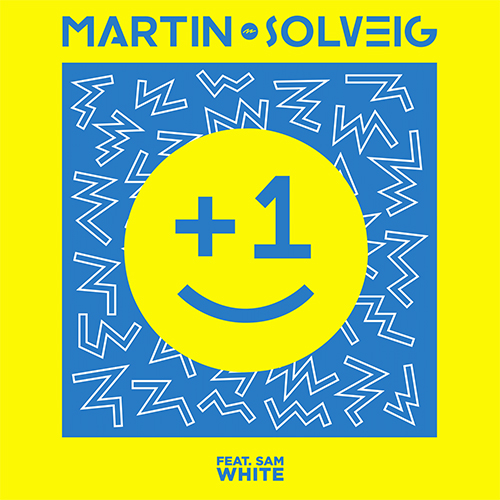People find it hard to believe that Christianity had such an inauspicious beginning in A.D. 33 with the crucifixion of Jesus of Nazareth. He had only a handful of followers — many of them poor fishermen. By A.D. 1300, Christianity was the world’s dominant religion and the foundation for Western civilization — shaping art, architecture, literature, culture, education, morality, politics, religious belief, and laws. What happened?
In the past, people attributed the growth of Christianity to miracles. Gregory the Illuminator (257-328) purportedly healed King Tiridates (250-330) of Armenia. Tiridates and his countrymen then converted to Christianity, making Armenia the first country to become Christian. At approximately the same time, Constantine the Great (c. 272-337) evidently saw a vision of the cross and the Greek words for “In this sign conquer.” After Constantine marked the shape of the cross on the shields of his men, they won the Battle of the Milvian Bridge on Oct. 28, 312. Believing the victory proved Constantine was the divinely appointed emperor of Rome, many citizens converted to Christianity.
MORMONS PROBABLY LIKE YOU. ATHEISTS PROBABLY DON’T
According to Oxford historian Peter Heather, author of the new Christendom: The Triumph of a Religion AD 300-1300, Christianity’s overwhelming success wasn’t due to God’s intervention. Nor was it because of the superiority of the religion. It was both much simpler than that and more complicated. A fallen-away Anglican, he believes Constantine was an opportunist who wasn’t sure whether he had heard from Jesus or Apollo and who, like many in power, used Christianity to further his ends.
Christianity, which started out as a “small Near Eastern mystery cult … and spread worldwide in the era of European imperialism,” became a mass religious movement mostly because Christianity allied with the Roman Empire — or, as Heather puts it, the empire became Christianized, and Christianity became Romanized.
The religion grew as the empire grew. But there were many starts, stops, and missteps along the way — all extensively detailed in Heather’s new doorstopper history.
It helped that Christianity had a capacity to reinvent itself, writes Heather. Christians blended their religious customs with those of earlier religions, mostly paganism, to become a syncretic mix of both. Christmas, for example, developed from pagan customs such as the burning of a yule log to celebrate the winter solstice. Roman Emperor Constantine also replaced the worship of the sun god with a celebration of the birth of Christ.
Although the first Christians were poor and uneducated, 4th-century Christians were elites whose money and influence helped Christianity flourish. As it did, kings and emperors governed the church. Then, around the time of Charlemagne, religious authority transferred to the papacy. By the 11th century, popes were in control.
He’s correct, however, when he writes that Christianity often grew by less than numinous means, as when wealthy city-dwellers converted to improve their status. In another example, the Donation of Constantine stated that Constantine donated western territory to Pope Sylvester (c. 283-335). But in 1439–1440, a priest proved the document was forged. This was a land grab.
Pope Gregory the Great (540-604) taxed Anglo-Saxon peasants into conversion. Charlemagne (747-814) drove the Slavs to convert. The Teutonic knights pressed Christianity on Lithuania. After Grand Duke Mindaugas (1203-1263) was baptized, Pope Innocent IV rewarded Mindaugas by elevating his duchy to the rank of kingdom. Lithuania was the last European country to be Christianized.
Vladimir the Great (c 958-1015) was baptized in order to marry the Christian daughter of the Byzantine emperor. An interesting tradition has it that Vladimir had considered the Muslim religion but decided against it because it prohibited alcoholic beverages. “Drinking is the joy of the Rus,” he supposedly said.
The most horrific examples of Christianity gone awry were the Crusades. This series of vicious military campaigns began as an attempt to wrest the holy places in Palestine from Muslim control and establish Christian rule. Incredibly dubbed Holy Wars, the expeditions lasted for 200 years and spread over Europe. Crusaders attacked not only Muslims but also Jews, pagans, and other non-Christians.
In one of the most informative chapters of the book, Heather examines the part Christianity played in education at a time when most people were illiterate. Christian intellectuals, such as St. Augustine of Hippo (354-420), attempted to decipher arcane theological concepts including the Trinity. St. Jerome (c 342-420) wrote several books but is most famous for his translation of the Old Testament (from Hebrew) and the New Testament (from Greek) into the Latin Vulgate. Other scholars tried to clarify contradictory rules established by popes and councils. Ultimately, these efforts created an intellectual atmosphere that led to “masters” teaching groups of elite young men rhetoric, grammar, and the liberal arts, which in turn spearheaded the founding of Oxford, Notre Dame, and the University of Bologna.
Other thought-provoking, though difficult, sections in the book concern the identity of Jesus as both God and man and the metaphysics of Jesus’s relationship with the Father. The notion of papal infallibility (which states that the pope cannot err when he speaks ex cathedra on faith and morals) caused serious arguments. The idea implies the supremacy of the Roman Church, and it rankled Byzantine Catholics, causing the Great Schism — still going on despite Vatican II’s (1962-1965) attempted rapprochement.
Heather’s latest is billed as a major reinterpretation of Christian religious history. But many of its ideas appear elsewhere. Edward Gibbon’s (1737-1794) classic history, The Rise and Fall of the Roman Empire, suggests that people converted for selfish reasons, namely that they were promised eternal happiness if they adopted the faith.
CLICK HERE TO READ MORE FROM THE WASHINGTON EXAMINER
Other recent books take a probing look at Christendom’s early religious history. These include Judith Herrin’s The Formation of Christendom, which provides an overview of Christianity in the Roman Empire from 410 to 800. Rodney Stark’s The Rise of Christianity claims that Jewish and Christian laws forbidding abortion and infanticide greatly contributed to Christianity’s growth. Bart Ehrman’s The Triumph of Christianity: How a Forbidden Religion Swept the World covers territory similar to Heather’s but in far fewer words. Ehrman, who seems to better appreciate Christianity’s spiritual side, is more forgiving of its transgressions. Heather finds them irksome at best.
Heather says his own lack of personal belief might be an advantage. Perhaps. But it seems to hamper his appreciation of the church’s spirituality and the innate poetry of rituals. He says little about both, although they exert a profound effect on believers and inspire conversions.
Diane Scharper is a poet and critic. She teaches the Memoir Seminar for the Johns Hopkins University Osher Program.
source














Post comments (0)